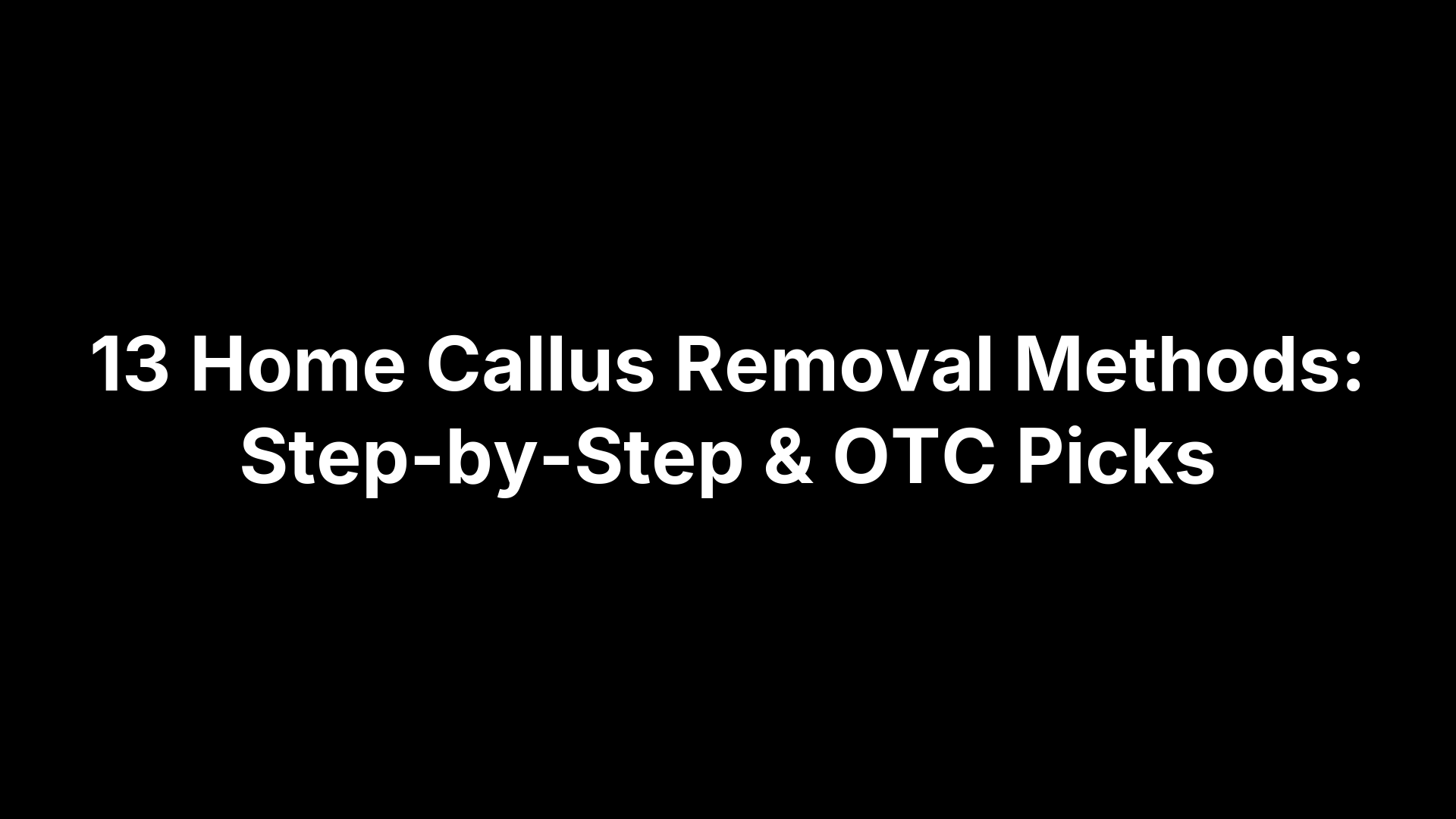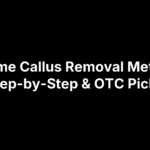Yes—most ankle sprains, strains, and even moderate ligament tears can make a full comeback when you follow a structured, phase-by-phase rehab plan rather than simply “walking it off.” The right mix of protection, progressive loading, and targeted exercises not only speeds healing but also slashes the odds of becoming one of the 70 % who re-sprain the same ankle within a year.
An ankle injury is more than a temporary nuisance; stretched or torn ligaments disrupt the joint’s delicate balance of strength, flexibility, and nerve signaling. The result can be chronic swelling, nagging pain, or that dreaded “giving-way” feeling during daily tasks—all of which steal confidence and sideline favorite activities. A thoughtful recovery program addresses every layer of that damage, from calming early inflammation to retraining the brain–ankle connection that keeps you upright on uneven ground.
This guide walks you through seven evidence-based steps, starting with the first 48 hours of POLICE care and ending with lifelong maintenance drills. Each section spells out clear goals, timelines, sample exercises, and red-flag warnings, and explains when it’s smart to call in a podiatrist or physical therapist for personalized tweaks. Ready to get moving? Let’s build a stronger, steadier ankle—one step at a time.
Step 1: Immediate Care—Protecting the Injured Ankle (0–48 Hours)
The first two days set the tone for your entire rehabilitation for ankle injury. Your job is to calm the joint, limit further fiber damage, and create the conditions for safe movement later. Research calls this the “acute” phase of functional treatment, which—along with mobility work and progressive strengthening—forms the three-stage answer to the common PAA question, “What is the best rehabilitation following an ankle injury?”
Recognizing Injury Grades & Why They Matter
Correctly grading the sprain tells you how much load the tissues can tolerate:
- Grade I (mild overstretch) – slight tenderness, minimal swelling, normal walking with a limp; typical heal time 1–3 weeks.
- Grade II (partial tear) – moderate swelling/bruising, pain with weight bearing, possible feeling of “looseness”; expect 3–6 weeks.
- Grade III (complete tear or high ankle sprain) – marked instability or inability to walk four steps, severe swelling; recovery several months and often requires bracing or surgery.
If you’re unsure, err on the side of caution and have the ankle evaluated—loading too early on a Grade II/III can delay healing.
The POLICE Protocol: Protect, Optimal Loading, Ice, Compression, Elevation
POLICE refreshes the older RICE concept by swapping full rest for Optimal Loading—gentle, pain-free motion or partial weight bearing that stimulates circulation without stressing the ligaments.
Sample 24-hour schedule (adjust for comfort):
| Timeframe | Action | Details |
|---|---|---|
| 00:00 | Protect | Lace-up brace or walking boot if Grade II/III |
| Every 2 h | Ice | 20 min crushed-ice bag; use cloth barrier |
| Continuous | Compression | Elastic wrap at 50 % stretch—should feel snug, not numb |
| Whenever seated/lying | Elevation | Foot above heart; stack pillows to 30°–45° angle |
| 3-4×/day | Optimal load | Ankle pumps or gentle toe wiggles in pain-free arc |
Sneak in light toe curls or isometric contractions while elevated; this keeps the calf muscle pump active and limits pooling.
Pain Management & Red Flags That Need Professional Care
Over-the-counter NSAIDs such as ibuprofen 400 mg every 6–8 hours (max 1 200 mg/day) can tame swelling; switch to acetaminophen if stomach issues or if you’re already icing aggressively.
Seek immediate medical attention if you notice:
- Inability to bear weight for four consecutive steps
- Numbness or tingling in the foot or toes
- Visible deformity or bone protrusion
- Swelling that intensifies overnight or severe, unrelenting pain at rest
Catching these red flags early prevents complications like missed fractures or compartment syndrome and keeps your recovery timeline on track.
Step 2: Gentle Mobility—Restoring Range of Motion Safely (Day 2–7)
Stiffness sets in shockingly fast after an ankle sprain; capsules, tendons, and even the tiny joint folds start to glue together within 48 hours. The second phase of rehabilitation for ankle injury therefore centers on re-introducing motion before those adhesions become long-term limits. We’re not trying to push through pain or chase big stretches yet—the goal is simply to coax the joint through a comfortable arc, improve fluid exchange, and lay collagen fibers down along the lines of stress.
When to Begin Movement Based on Injury Grade
- Grade I: Light motion can start 24–48 h post-injury as long as pain stays ≤3 / 10.
- Grade II: Wait until the 48–72 h mark; swelling should be trending down and you should tolerate partial weight bearing.
- Grade III: Hold off until a clinician gives the green light—usually after imaging or once the ankle is stable in a boot.
Follow the “pain-free arc” rule: if a motion spikes discomfort above 3 / 10 or increases swelling later in the day, back off.
Passive & Active ROM Exercises
Perform these three times daily while seated, leg supported:
- Alphabet Exercise – Trace each letter with your big toe, keeping movements small and smooth.
- Ankle Circles – 10 clockwise, 10 counter-clockwise reps; imagine slow bicycle pedals.
- Ankle Pumps – Pull toes toward shin, then point away; 30 reps × 3 sets.
Keep breathing normally and watch for hitching or substitution from the hip.
Stretching the Surrounding Muscles
Tight calves reduce dorsiflexion and overload healing ligaments. Alternate the two wall stretches below, holding each for 30 s, 3 reps:
| Stretch | Knee Position | Target Muscle |
|---|---|---|
| Gastrocnemius | Straight | Upper calf |
| Soleus | Slightly bent | Lower calf/achilles |
Need more precision? Loop a towel around the ball of the foot and gently pull until you feel a mild pull—not a burn—along the calf. Avoid bouncing and stop if you sense ligament pain on the lateral ankle. Early, gentle flexibility now prevents that “blocky” feeling when you transition to weight-bearing drills next week.
Step 3: Early Strengthening—Activating Key Muscles Without Stress (Week 1–3)
Once swelling is under control and the ankle can move through a small, pain-free range, it’s time to wake up the muscles that protect the joint. Research shows that light activation as early as day 7 stimulates collagen cross-linking and restores joint stiffness without stretching healing ligaments. The mantra in this phase of rehabilitation for ankle injury is “tension without torque”—create muscle effort while keeping the joint itself quiet.
Isometric Contractions for Stability
Isometrics are the safest gateway to strength because the ankle doesn’t actually move. Sit with the foot flat or supported and press gently against an immovable object for 5–10 seconds, 10 reps in each direction:
- Dorsiflexion (pull toes toward shin against a wall)
- Plantarflexion (press ball of foot into floor)
- Inversion (push inner foot against table leg)
- Eversion (push outer foot against partner’s hand)
Aim for 2–3 sets daily, keeping effort at about 50 % of max to avoid ligament shear.
Resistance Band Exercises for All Planes
When you can perform isometrics pain-free, graduate to elastic bands. Start with light (yellow) tubing and progress every 4–7 days if swelling doesn’t spike.
| Movement | Primary Muscles | Sets × Reps | Common Errors |
|---|---|---|---|
| Dorsiflexion | Tibialis anterior | 3 × 15 | Hip hiking |
| Plantarflexion | Gastrocnemius/soleus | 3 × 15 | Toe clawing |
| Inversion | Tibialis posterior | 3 × 12 | Knee rotation |
| Eversion | Peroneals | 3 × 12 | Ankle rolling |
Control the return phase—slow eccentrics build ligament tolerance.
Footwear, Bracing, and Taping During Strength Phase
Supportive sneakers with a firm heel counter let you practice standing band work sooner than barefoot training. A lace-up brace or figure-8 tape job adds proprioceptive feedback and limits risky end-range motion while muscles relearn their job. Keep mild compression sleeves handy for post-exercise swelling; if circumference increases more than 5 %, scale back resistance the next session.
Consistent, low-stress loading now sets the stage for the balance drills coming up in Step 4.
Step 4: Proprioception & Balance—Retraining the Neuromuscular System (Week 2–5)
By the time you can perform light band work without a pain flare, the weak link is no longer muscle strength—it’s your brain’s ability to sense where the joint is in space. Sprains stretch the tiny mechanoreceptors that feed balance information to the spinal cord; if you don’t reboot that feedback loop, even a strong ankle stays clumsy and prone to collapse. This phase of rehabilitation for ankle injury picks up around the end of week 2 and overlaps with continued strengthening drills.
Why Balance Training Reduces Re-Sprain Risk
Studies tie up to 86 % of repeat sprains to impaired proprioception rather than raw weakness. Wobble-board or single-leg stance drills reactivate joint receptors, speed reflex muscle firing, and teach your central nervous system to auto-correct when the foot hits an uneven patch of sidewalk. Consistent balance work has been shown to cut re-sprain rates roughly in half within a single season of sport.
Progressive Balance Drills
Use the ladder below and move to the next rung only after you can hold the current level for 30 seconds with pain ≤2 / 10 and no visible wobble:
- Double-leg stance, eyes open, firm floor
- Single-leg stance, eyes open
- Single-leg stance on foam pad or folded towel
- Eyes closed on foam pad
- External perturbations—partner taps hips or tosses ball
Perform 3 sets of 30-second holds twice daily. For added challenge, mini-squat during the hold or rotate your head side-to-side to stress vestibular input.
Integrating Core & Hip Stability
Balance is a full-chain affair: weak glutes let the knee cave, forcing the ankle to roll. Blend two or three of these moves into every session:
- Side-lying hip abductions: 3 × 15 each side
- Single-leg Romanian deadlift with light kettlebell: 3 × 10
- Plank with alternating shoulder taps: 3 × 20 taps
Solid hips give the recovering ankle a more stable platform, improving overall gait mechanics and preparing you for the agility work in Step 5.
Step 5: Functional Training—Transitioning to Daily & Sport Activities (Week 4–8)
Strength and balance are only half the story; you still have to put that refreshed ankle through the real-world motions of walking, climbing stairs, and—if you’re an athlete—cutting or jumping at full speed. Functional training bridges the clinic and the court by loading the joint in patterns that look and feel like daily life. Expect some overlap with Steps 3 and 4; you’ll keep band work and balance drills in the mix while layering in more dynamic tasks. Pain should stay at or below 2 / 10 during exercise and should not increase the next morning. If swelling, limping, or a sense of “giving way” returns, step back a rung for 48 hours.
Gait Re-education and Walking Progressions
A normal stride distributes force smoothly from heel strike to toe-off; after an injury, many people adopt a guarded shuffle that quietly overloads the hip and knee. Use these cues to retrain your pattern:
- March in place, feeling the foot roll from heel to big toe.
- Walk a 30-ft line, eyes forward, using a heel-to-toe roll and matching stride lengths.
- Add a metronome (90–100 bpm) to recover cadence.
When you can walk 10 minutes pain-free, graduate to:
- Treadmill incline: 3 % grade for 5 min, progressing by 1 % each session.
- Stair intervals: ascend one flight, descend slowly, 5 rounds.
Retire the walking boot once you can tolerate 15 consecutive minutes of symmetrical gait; switch to a sneaker with firm heel counter and, if needed, a thin gel insert to dampen impact.
Plyometric & Agility Workouts
Dynamic loading teaches the healing ligaments to absorb rapid stretch without failing. Start each drill on a flat gym mat:
| Week | Drill | Contacts | Sets × Reps |
|---|---|---|---|
| 4–5 | Two-foot pogo hops | 30 | 3 × 10 |
| 5–6 | Single-leg forward hops | 45 | 3 × 15 |
| 6–7 | Lateral bounds over line | 60 | 4 × 15 |
| 7–8 | Ladder in-in-out shuffle | 90 | 3 passes |
Increase total contacts no more than 10 % per week. Land softly, knees slightly bent, and keep the ankle aligned over second toe to avoid valgus collapse.
Sport-Specific or Occupational Adaptations
Once plyometrics feel natural, layer in tasks that mirror your personal demands:
- Basketball/Soccer: Figure-8 cuts around cones, 5 x 30 sec bouts.
- Running/Hiking: Uneven-terrain lunges on grass or trail, 3 × 12 each leg.
- Warehouse Work: Farmer’s carry with ankle brace—two 25 lb kettlebells for 40 yd, 4 rounds.
Follow the 30 % rule: add no more than one-third of previous weekly mileage, minutes, or practice time. Keep a lace-up brace or athletic tape on during high-risk activities for at least the first season post-injury; evidence shows external support plus ongoing maintenance drills cut re-sprain rates dramatically.
Dial in these functional skills and you’ll move into Step 6 with confidence that your rehabilitation for ankle injury is translating to real-life resilience.
Step 6: Monitoring Progress & Adjusting the Plan
Rehab is never a straight line. Tracking objective data lets you know when to push and when to pause so you don’t drift into the “stuck” zone many patients report around week 6.
Benchmarks for Each Phase
| Phase Goal | Key Metric | Pass Mark |
|---|---|---|
| Pain & swelling control | Evening pain score | < 2/10 |
| Mobility restored | Dorsiflexion vs. uninjured side | ≤ 5° gap |
| Strength symmetry | Single-leg calf raises | 25 reps pain-free |
| Dynamic readiness | Single-leg hop distance | ≥ 90 % of other leg |
Fail two or more markers and stay in the current phase 3-4 more days before retesting.
Using a Rehab Log or App
Logging workouts turns vague impressions into trends. A simple sheet or phone app should capture:
- Date & exercises
- Sets/reps/weight
- Pain during (
0–10) and two hours after - Ankle circumference (cm) at malleoli
Most smart watches auto-tag step counts; use low-step days as timely reminders to ice and elevate.
When to Seek Professional Assessment
Hit the brakes and call a podiatrist or physical therapist if:
- Progress stalls for 7 days despite good compliance
- New giving-way episodes, audible “pop,” or sharp pin-and-needle sensations appear
- Swelling rebounds after every workout or you still limp at week 4
Imaging such as X-ray, ultrasound, or MRI may be needed to rule out occult fractures or a high-grade ligament tear. Timely evaluation keeps the entire rehabilitation for ankle injury moving forward, not sideways.
Step 7: Long-Term Prevention—Keeping Your Ankles Strong (Month 2 and Beyond)
Ligaments keep remodeling for up to a year, which means the ankle you save today can still backslide tomorrow if you stop training. The final phase of rehabilitation for ankle injury therefore shifts from “getting better” to “staying bullet-proof.” Think of it as brushing your teeth—short, regular sessions that prevent bigger problems down the road.
Maintenance Exercise Routine
Do this quick “ankle hygiene” circuit twice a week:
- Calf raises – 3 × 20 on a step, drop heels below level for full stretch.
- Band eversion/inversion – 2 × 15 each direction with a medium (green) band.
- Single-leg balance with tennis-ball toss – 3 × 30 s; progress to pillow surface.
- Jump-rope intervals – 5 rounds of 30 s on, 30 s off to keep plyometric reflexes sharp.
Lifestyle & Footwear Choices That Protect Ligaments
- Pick shoes with a stiff heel counter and minimal side-to-side twist.
- Rotate running shoes every 300–400 miles to avoid midsole collapse.
- Limit high heels or floppy sandals to rare occasions; both spike inversion torque.
- For trail or warehouse work, lace-up braces add invisible insurance.
Addressing Underlying Issues with Orthotics or Corrective Exercises
Flat feet, high arches, or leg-length discrepancies alter load paths and can sabotage even perfect rehab. A podiatrist can:
- Cast custom orthotics that realign the subtalar joint.
- Prescribe hip-glute strengthening to curb knee valgus.
- Suggest shoe lifts or wedge inserts when structural asymmetry exists.
Tend to these root causes and your ankle will stay sturdy long after the initial injury is a distant memory.
Moving Forward on Solid Ground
From the first hint of swelling to your first pain-free jog, successful rehabilitation for ankle injury is a series of small but purposeful milestones. You protected the joint with POLICE, coaxed back mobility, rebuilt strength, sharpened balance, rehearsed real-world movements, and learned how to track—and tweak—your progress. Keep the maintenance circuit and smart shoe choices in your weekly routine and you’ll stack resilient collagen, responsive muscles, and reliable proprioception for the long haul.
Still feeling unsure about a lingering ache, recurring instability, or which brace is right for your sport? A brief check-in can save months of frustration. The board-certified podiatrists at Achilles Foot and Ankle Center tailor rehab plans, orthotics, and advanced treatments to your exact needs—right here in Central Virginia. Schedule an evaluation today and put expert eyes on your recovery roadmap at Achilles Foot and Ankle Center.






